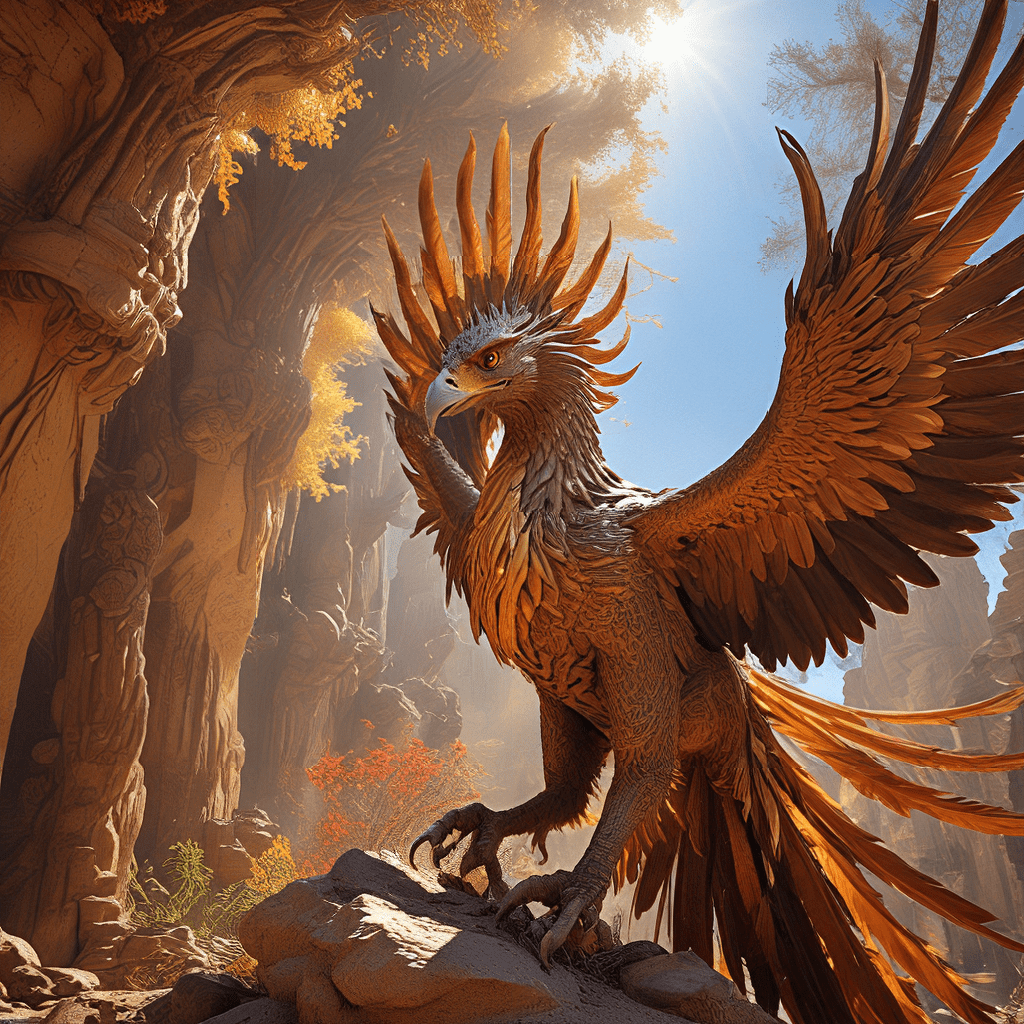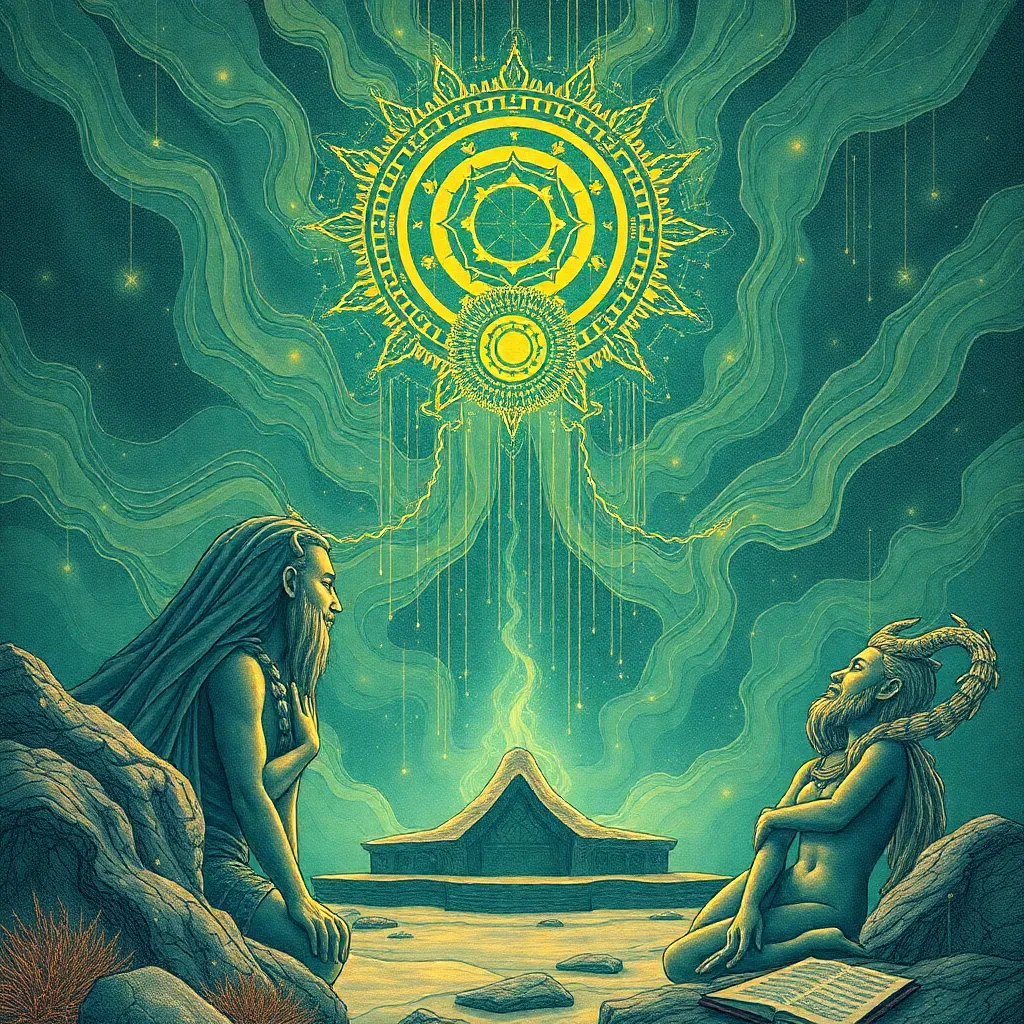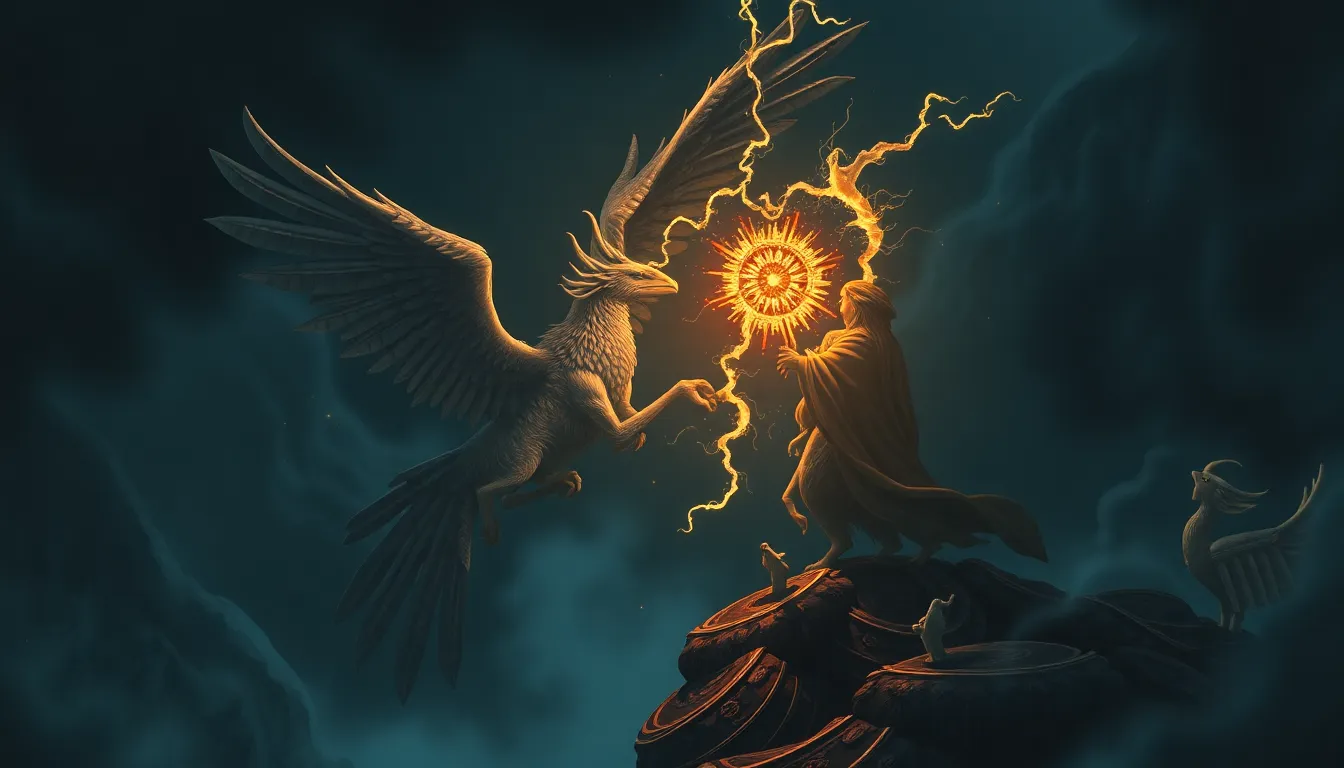The Phoenix: A Universal Symbol of Rebirth
The phoenix, a mythical creature that rises from its own ashes, is a captivating symbol of rebirth, renewal, and immortality found across cultures and time periods. Its legend has captivated the imaginations of storytellers and artists for centuries, inspiring countless works of art, literature, and mythology. The phoenix is a powerful symbol of hope and resilience, reminding us that even in the face of adversity, there is always the possibility of renewal and transformation.
Origins of the Phoenix Myth: Ancient Egypt and the Bennu Bird
The origins of the phoenix myth can be traced back to ancient Egypt. In Egyptian mythology, the Bennu bird, often depicted as a heron or a gray egret, was closely associated with the sun god Ra. The Bennu bird was believed to emerge from a fiery self-combustion, symbolizing the cyclical nature of life, death, and rebirth. Bennu was also associated with the creation of the world, and the sun’s daily journey across the sky was seen as a metaphor for this cyclical process.
The Bennu bird’s association with the sun god Ra further emphasizes the connection between the phoenix and the concept of renewal. Ra’s daily journey across the sky, which brought light and life to the world, was seen as a parallel to the phoenix’s cycle of death and rebirth. The Bennu bird’s legend was passed down through generations, eventually making its way into Greek mythology and expanding its influence worldwide.
The Phoenix in Greek Mythology: A Symbol of Cyclical Renewal
In Greek mythology, the phoenix is described as a magnificent bird with brilliant red and gold feathers. It was believed to live for 500 years, and when it neared its end, it would build a nest of fragrant wood and set itself aflame. From the ashes, a new phoenix would rise, ready to live another 500 years.
The phoenix’s cycle of death and rebirth was often seen as a metaphor for the cyclical nature of life, death, and regeneration. The phoenix’s ability to rise from its own ashes was a symbol of hope and resilience, reminding people that even in the face of death, there is always the possibility of new beginnings. The phoenix’s myth was a source of inspiration for poets, philosophers, and artists, who often used it as a symbol of the cyclical nature of life and the power of renewal.
The Phoenix in Roman Literature: Ovid’s Metamorphosis and the Spread of the Myth
Roman literature played a significant role in spreading the phoenix myth throughout the Roman world. The poet Ovid, in his epic poem “Metamorphoses,” provides a detailed account of the phoenix’s life cycle, further solidifying its image as a symbol of rebirth and renewal.
Ovid’s account of the phoenix is one of the most famous and influential descriptions of the myth. He details the phoenix’s magnificent appearance, its 500-year lifespan, and its self-immolation followed by rebirth. Ovid’s poem helped to solidify the phoenix as a powerful symbol in Roman culture, and its influence can be seen in Roman art, architecture, and literature.
Eastern Influences: The Phoenix in Chinese and Japanese Folklore
The phoenix myth also found its way into Eastern cultures, where it was embraced as a symbol of good fortune, prosperity, and imperial power. In Chinese folklore, the phoenix is known as the Fenghuang, and it represents the feminine principle, while the dragon represents the masculine principle. The Fenghuang is often depicted as a colorful bird with a long tail, and it is associated with qualities such as harmony, peace, and virtue. In Japan, the phoenix is known as the Hō-ō, and it holds similar connotations of good fortune, peace, and longevity.
The phoenix’s presence in Eastern cultures highlights its enduring power as a universal symbol. The phoenix, whether it is the Bennu bird in ancient Egypt, the phoenix in Greek mythology, or the Fenghuang in Chinese folklore, holds a special place in the collective imagination, serving as a reminder of the cyclical nature of life and the power of renewal.
The Phoenix in Art and Literature: From Ancient Mosaics to Modern Novels
The phoenix has been a popular subject in art and literature for centuries. From ancient mosaics depicting the phoenix’s fiery rebirth to modern novels that explore the phoenix as a symbol of personal transformation, the phoenix continues to capture the imagination of artists and writers. The phoenix’s enduring popularity is a testament to its timeless appeal as a symbol of hope, resilience, and renewal.
The Phoenix in Art and Literature: From Ancient Mosaics to Modern Novels
The phoenix’s enduring presence in art and literature is a testament to its timeless appeal as a symbol of hope, resilience, and renewal. Throughout history, artists and writers have drawn inspiration from the phoenix’s myth, depicting its fiery rebirth and transformation in various forms.
Ancient mosaics, often found in Roman villas and public spaces, feature stunning depictions of the phoenix. These works of art showcase the phoenix’s majestic appearance, its brilliant plumage, and its triumphant emergence from the flames. The phoenix’s presence in these mosaics speaks to the Roman fascination with the myth and its associations with immortality, renewal, and the cyclical nature of life.
In medieval art, the phoenix often appears in illuminated manuscripts, tapestries, and church paintings. These depictions often portray the phoenix in a more symbolic context, representing themes of resurrection, redemption, and the triumph of good over evil. During the Renaissance, artists such as Michelangelo and Raphael incorporated the phoenix into their works, drawing upon both classical and Christian interpretations of the myth.
The phoenix’s influence extends beyond visual art, finding its way into literature and poetry as well. Ancient Greek poets like Hesiod and Pindar used the phoenix as a metaphor for cyclical renewal and the impermanence of human life. Roman poets like Ovid further popularized the phoenix myth in their works, contributing to its enduring presence in Western literature.
Modern authors and filmmakers continue to explore the phoenix myth, often using it as a symbol of personal transformation and the power of resilience. The phoenix’s story is a source of inspiration for writers and directors who seek to explore themes of overcoming adversity, finding hope amidst despair, and embracing the possibility of new beginnings. The phoenix’s enduring appeal lies in its ability to resonate with audiences on a universal level, reminding us that even in the darkest of times, there is always the possibility of rebirth and renewal.
The Phoenix as a Metaphor for Personal Transformation
The phoenix’s cycle of death and rebirth extends beyond its mythological context, serving as a powerful metaphor for personal transformation. The phoenix’s journey from ashes to glory mirrors the process of personal growth and change that we all experience in life.
When we face challenges and setbacks, we often feel like we are in a state of destruction or decline. We may experience a sense of loss, grief, or disappointment, and it can be difficult to see a path forward. However, just as the phoenix rises from its ashes, we too can emerge from our trials stronger and more resilient.
The phoenix’s transformation is a process of shedding old patterns, beliefs, and behaviors that no longer serve us. It is a process of letting go of the past and embracing the possibility of a fresh start. Just as the phoenix’s fire symbolizes the destruction of the old, our own challenges can act as catalysts for growth and change.
Through adversity, we learn valuable lessons about ourselves and the world around us. We develop new strengths, skills, and perspectives that help us navigate the challenges of life with greater wisdom and resilience. The phoenix’s journey reminds us that we are not defined by our past mistakes or failures, but rather by our ability to learn from them and emerge stronger and more transformed.
The Phoenix and the Cycle of Life, Death, and Rebirth
The phoenix’s cycle of death and rebirth is a powerful representation of the cyclical nature of life itself. Our lives, like the phoenix’s, are marked by cycles of growth, change, and renewal. We are born, we grow, we face challenges and setbacks, and eventually, we pass on. However, our legacy and the impact we have had on the world continue to live on.
The phoenix’s cycle of death and rebirth is not simply a biological process, but rather a spiritual one. It speaks to the interconnectedness of life, death, and rebirth, and the idea that even in the face of death, there is always the possibility of renewal. The phoenix’s journey reminds us that death is not an end, but rather a transition to a new phase of existence.
The phoenix’s symbolism is also relevant in the context of our personal and collective journey as a species. We are constantly evolving and transforming, adapting to new challenges and embracing new possibilities. The phoenix’s cycle of death and rebirth reminds us that change is an inherent part of life and that we should not fear it, but rather embrace it as a catalyst for growth and renewal.
The Phoenix as a Symbol of Hope and Resilience
The phoenix’s myth is a powerful reminder that even in the face of adversity, there is always the possibility of hope and resilience. The phoenix’s ability to rise from its own ashes symbolizes the human spirit’s capacity for renewal and transformation.
When we face challenges and setbacks, it can be easy to lose hope and despair. We may feel like we are trapped in a cycle of negativity, unable to break free from the weight of our past mistakes or failures. However, the phoenix’s story reminds us that even in the darkest of times, there is always a glimmer of hope.
The phoenix’s journey is a testament to the power of resilience. It is a reminder that we are not defined by our failures or setbacks, but rather by our ability to overcome them and emerge stronger and more determined. The phoenix’s story inspires us to face challenges with courage and to never give up on our dreams, no matter how difficult the path may seem.
The phoenix’s symbolism resonates with people from all walks of life, inspiring us to embrace the possibilities of renewal and transformation. Whether it is overcoming personal challenges, finding hope in the face of adversity, or simply appreciating the beauty of the natural world, the phoenix’s myth offers a timeless message that continues to inspire and uplift us today.
The Phoenix: A Timeless Symbol of Renewal and Transcendence
The phoenix, a mythical creature that rises from its own ashes, is a universal symbol of rebirth, renewal, and transcendence. Its legend has captured the imaginations of storytellers and artists for centuries, inspiring countless works of art, literature, and mythology. The phoenix is a powerful symbol of hope and resilience, reminding us that even in the face of adversity, there is always the possibility of renewal and transformation.
The phoenix’s myth transcends cultural boundaries and time periods, speaking to a universal human need for hope and renewal. Whether we are facing personal challenges, grieving a loss, or simply seeking a sense of meaning and purpose in our lives, the phoenix’s story offers a powerful message of hope and resilience.
The phoenix’s journey from ashes to glory is a metaphor for the cyclical nature of life, death, and rebirth. It reminds us that we are not defined by our past mistakes or failures, but rather by our ability to learn from them and emerge stronger and more transformed. The phoenix’s story is a reminder that we all have the potential for renewal and that even in the darkest of times, there is always the possibility of a new beginning.
Frequently Asked Questions
**Q: What is the Phoenix?**
**A:** The phoenix is a mythical creature that is often depicted as a bird with brilliant red and gold feathers. It is known for its ability to rise from its own ashes, symbolizing rebirth, renewal, and immortality.
**Q: Where did the Phoenix myth originate?**
**A:** The origins of the phoenix myth can be traced back to ancient Egypt, where the Bennu bird, a heron or gray egret, was associated with the sun god Ra and represented cyclical renewal. The myth later spread to Greece and Rome, where it became a popular subject in literature and art.
**Q: What does the Phoenix symbolize?**
**A:** The phoenix is a powerful symbol of hope, resilience, renewal, and immortality. It represents the idea that even in the face of adversity, there is always the possibility of rebirth and transformation.
**Q: What is the significance of the Phoenix’s cycle of death and rebirth?**
**A:** The phoenix’s cycle of death and rebirth is a metaphor for the cyclical nature of life itself. It symbolizes the idea that even in death, there is always the possibility of renewal and that our impact on the world continues to live on.
**Q: How has the Phoenix been depicted in art and literature?**
**A:** The phoenix has been a popular subject in art and literature for centuries. From ancient mosaics depicting its fiery rebirth to modern novels exploring its symbolism of personal transformation, the phoenix continues to inspire artists and writers.
**Q: What is the Phoenix’s significance in different cultures?**
**A:** The phoenix myth has been embraced in various cultures, including Egypt, Greece, Rome, China, and Japan. It is often associated with themes of rebirth, renewal, good fortune, and imperial power.
**Q: What lessons can we learn from the Phoenix myth?**
**A:** The phoenix’s myth teaches us that we should not fear change but embrace it as a catalyst for growth and renewal. It reminds us that we are not defined by our past mistakes or failures but by our ability to learn from them and emerge stronger and more transformed.



